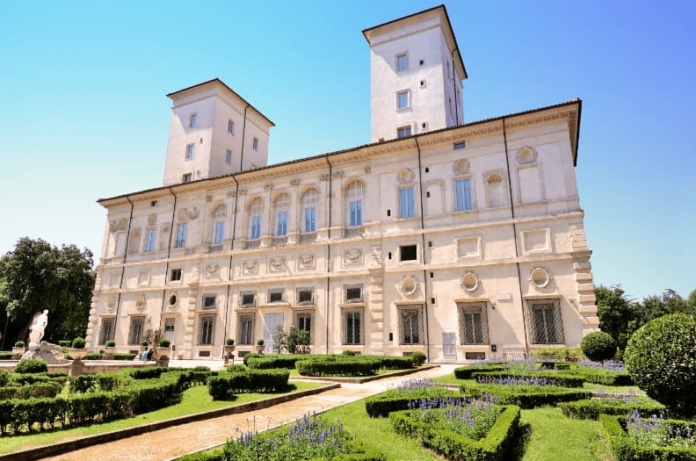Rome, which is frequently referred to as the Eternal City, has an extravagant past mixed in with a rich cultural tapestry. Among the ruins of this opulence are the ancient noble villas that were formerly magnificent homes for the aristocratic. Many of these villas have now been renovated into opulent hotels, cultural centers, and contemporary residences that embrace modern living while providing a rare window into the city’s storied past. This essay examines the historical significance, architectural characteristics, and modern use of these repurposed Converted Old Noble Villas in Rome homes.
Table of Contents
Historical Significance
Converted Old Noble Villas in Rome tradition began throughout the Renaissance and Baroque eras, when affluent families commissioned ornate buildings for use as summer homes or city houses. These villas offered a retreat from city life because they were frequently located on the outskirts of the city and surrounded by large gardens, orchards, and vineyards. Famous families that influenced the city’s architectural scene were the Medici, Borghese, and Doria Pamphili, who commissioned some of the most exquisite villas that still stand today. The Converted Old Noble Villas in Rome were hubs of creative and cultural activity in addition to being places to live. They drew writers, philosophers, and artists with their opulent parties, art exhibits, and thought-provoking debates. The opulent buildings, embellished with sculptures, frescoes, and elaborate gardens, showcased the affluence and influence of their proprietors and additionally reinforced Rome’s status as a center of culture.
Architectural Features
Converted Old Noble Villas in Rome are distinguished by their exquisite architectural designs, which frequently include elements of Neoclassical, Renaissance, and Baroque architecture. Typically, these villas have:
- Grand Facades: A lot of the villas have striking stone facades that are decorated with elaborate frescoes and carvings that highlight the artistic prowess of the time.
- Large salons dining rooms, and libraries with elaborate moldings, high ceilings, and original artwork are common interior features that let inhabitants and guests experience the opulence of bygone eras.
- Gardens and Courtyards: Beautifully designed gardens with sculptures, fountains, and well-trimmed hedges are often found surrounding the homes. These outside areas offer a calm haven and an insight into ancient Roman gardening techniques.
- Creative Modifications: Many conversions mix the old and the new by adding contemporary conveniences and environmentally friendly methods, all the while maintaining the original building. Energy-efficient systems, solar power, and geothermal heating are becoming more and more commonplace features.
Current Uses
Rome’s noble villa conversions have given rise to a variety of applications that respect its historical relevance while meeting modern requirements. Among the noteworthy instances are:
Luxury Hotels and Resorts
Numerous historic Converted Old Noble Villas in Rome have been converted into opulent hotels and resorts, providing visitors with a one-of-a-kind chance to experience the grace of aristocratic living. These places frequently keep the original beauty of the villa intact while offering contemporary conveniences like excellent dining, spas, and concierge services. While discovering the rich history of the house, guests may take in the opulent surrounds, frequently through guided tours and carefully selected events.
Cultural Venues
A few villas that were turned into art galleries, exhibition rooms, and performance halls are now used as cultural venues. These locations frequently hold events that promote a link between the past and present, like concerts, art exhibits, and theater productions. They foster creativity and cross-cultural interchange by providing platforms for both established and up-and-coming artists.
Private Residences
Due to the conversion of some Converted Old Noble Villas in Romes into private homes, homeowners can now live amidst the grandeur of Rome’s past. These residences offer an opulent lifestyle rooted in history since they frequently preserve original features like large gardens, antique furnishings, and ceiling frescoes. Remodeled villas provide occupants with a special link to Rome’s past and a harmonious fusion of contemporary comfort and historical appreciation.
Event Spaces
Converted Old Noble Villas in Rome are extremely well-liked as locations for private parties, business gatherings, and weddings. Their gorgeous grounds and architecture provide for a stunning setting for parties. These Converted Old Noble Villas in Rome are popular wedding venues because of their historical significance and romantic atmosphere.
Challenges of Preservation
While many Converted Old Noble Villas in Rome have been revived by the conversion of noble villas, there are issues with authenticity and preservation. It’s difficult to strike a balance between the necessity for contemporary conveniences and the need to preserve historical authenticity. To guarantee that the cultural relevance of these properties is maintained for future generations, strict laws control their repair and use.
Sustainable Practices
The renovation and upkeep of these Converted Old Noble Villas in Rome have placed an increasing focus on sustainable techniques in recent years. Eco-friendly materials and technology are being used in an effort to lessen the impact on the environment and improve the long-term viability of these ancient buildings. Through the adoption of sustainable practices, the repurposed aristocratic mansions may maintain their status as emblems of grace and history while accommodating contemporary lifestyle demands.
Conclusion
Converted Old Noble Villas in Rome restored ancient noble homes serve as a reminder of the city’s rich cultural legacy and history. Once the pinnacle of the aristocratic lifestyle, these architectural marvels have been carefully altered to match modern demands while maintaining their historical relevance. These villas continue to integrate the past into the fabric of contemporary Rome, serving as opulent lodgings, cultural hubs, private homes, or event locations, allowing locals and tourists to enjoy the splendor of bygone times. These aristocratic houses continue to stand as timeless reminders of Rome’s historical significance and allure as the city changes.



